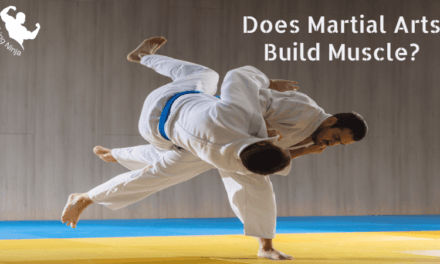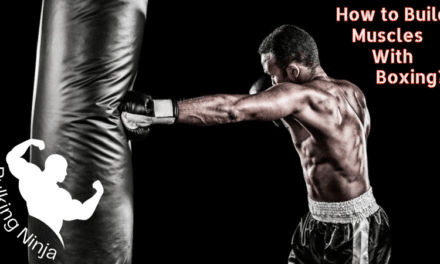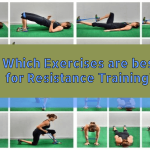Resistance training, a crucial component of athletic conditioning, is not limited to the confines of a gym. In fact, certain sports inherently incorporate resistance training elements, offering a dynamic and engaging way to build strength, endurance, and muscle tone.
In this blog post, we’ll explore the best sports for resistance training that effectively integrate resistance training within their core activities. From the grappling power of wrestling to the explosive strength required in gymnastics, each sport offers unique benefits that go beyond the traditional weight room experience.
Whether you’re an aspiring athlete or simply looking for an enjoyable way to stay fit and strong, understanding how these sports contribute to resistance training will open up new avenues for physical and mental growth.
Table of Contents
What are the Best Sports for Resistance Training?
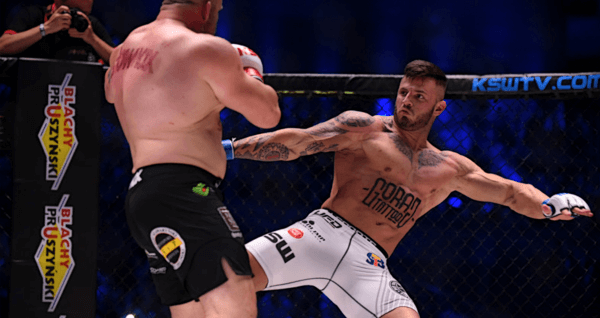
The term “best” can be subjective, especially in the context of sports, as it largely depends on individual interests and fitness goals. However, several the best sports for resistance training are renowned for effectively incorporating resistance elements, which can significantly enhance strength and fitness. Some of these sports include:
Rowing
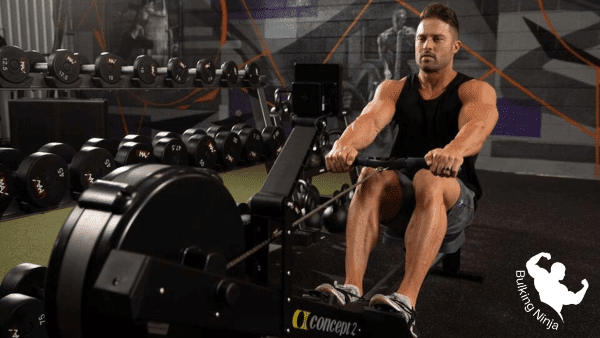
- Engagement of Major Muscle Groups
- Legs: The action of pushing off during each stroke primarily works the quadriceps, hamstrings, and glutes.
- Core: Stability and power in rowing come significantly from the core muscles, including the abs and lower back.
- Back: The pulling phase of the stroke engages the upper and lower back muscles, particularly the latissimus dorsi.
- Arms: Biceps, triceps, and shoulders are involved in both the pulling and stabilizing aspects of the rowing motion.
- Resistance Source
- The resistance in rowing is provided by the water against the oar. This natural resistance is both effective and adaptive; the harder you row, the more resistance you encounter.
- Low-Impact Nature:
- Rowing is low-impact, meaning it places minimal stress on the joints. This makes it suitable for a wide range of people, including those with joint concerns or recovering from injuries.
- Endurance and Strength Building:
- The continuous rhythmic motion in rowing builds both muscular and cardiovascular endurance, improving overall stamina and heart health.
- Cardiovascular Health:
- Rowing is an excellent cardiovascular workout. It raises the heart rate and increases oxygen uptake, benefiting heart and lung health.
- Balanced Muscular Workout:
- Rowing requires a coordinated effort of pulling (using the back and arms) and pushing (using the legs), providing a balanced workout that develops both the upper and lower body.
In essence, rowing is a multifaceted exercise that offers a unique blend of strength training and cardiovascular improvement. It’s effective for building endurance, strengthening muscles, and enhancing overall fitness, all while being gentle on the body’s joints. Whether done on water or a rowing machine, it provides a holistic workout experience.
Rock Climbing

Rock climbing or bouldering is an excellent sport that acts as a natural form of resistance training, with unique benefits and challenges. Here’s how it serves as an effective workout:
- Natural Resistance: In rock climbing, climbers lift their own body weight against gravity. This resistance is a fundamental aspect of the sport and is key to building strength.
- Upper Body Engagement: Climbing places significant demands on the upper body, particularly the arms and back. Pulling oneself up on various holds and ledges requires substantial arm strength, while stabilizing the body and maintaining positions engages the back muscles extensively.
- Legs and Core Workout: Although it may seem predominantly upper-body focused, rock climbing also heavily engages the leg muscles, including the quadriceps, hamstrings, and calves, as climbers push up with their legs. The core muscles are constantly at work to maintain balance and stability.
- Grip Strength: The sport is excellent for developing grip strength due to the constant gripping of different holds, which challenges the forearms and hand muscles.
- Balance and Spatial Awareness: Rock climbing requires and develops a high degree of balance and spatial awareness. Navigating through various routes demands body awareness and coordination, enhancing these skills.
- Dynamic Muscle Engagement: The varied nature of climbing routes means that climbers have to constantly adapt their movements and positions. This dynamic engagement of different muscles makes rock climbing a versatile form of resistance training, as it avoids repetitive strain on specific muscle groups.
- Mental and Physical Challenge: Beyond the physical aspect, rock climbing also presents a mental challenge, requiring problem-solving skills to determine the best routes and techniques for ascent.
In summary, rock climbing provides a comprehensive, full-body workout that combines strength, endurance, balance, and mental strategy. Its natural resistance training, through lifting one’s own body weight, along with the varied and dynamic nature of the climbs, makes it an exceptionally well-rounded and engaging sport.
Wrestling and Judo

Combat sports like wrestling, judo, or Brazilian Jiu-Jitsu are highly demanding forms of physical activity, providing a unique combination of resistance training and cardiovascular exercise. Here’s how these sports function as effective workouts:
Dynamic and Unpredictable Resistance
Unlike traditional forms of resistance training with static weights, the resistance in combat sports comes from an opponent’s body weight and strength. This resistance is dynamic and unpredictable, requiring constant adaptation and responsiveness.
Full-Body Engagement
Athletes in these sports use their entire body to grapple, maneuver, and gain leverage over their opponents. This involves extensive use of the core, arms, legs, and back, providing a comprehensive full-body workout.
Core Strength Development
The core muscles are crucial in these sports for maintaining balance, executing movements, and providing a base of power. Athletes often develop exceptional core strength through regular training.
Balance and Coordination
Combat sports require a high degree of balance and coordination. Athletes must be able to control their movements precisely while responding to their opponent’s actions.
Muscular Endurance
These sports demand sustained physical effort, leading to improved muscular endurance. Athletes must maintain their strength and energy levels throughout the duration of a match or sparring session.
Explosive Power and Sustained Force Application
Success in combat sports often hinges on the ability to generate explosive power for quick, decisive movements, as well as the capacity to apply force steadily over time to control or overpower an opponent.
Mental and Tactical Skills
Beyond physical capabilities, these sports also develop mental toughness, strategic thinking, and quick decision-making skills, as athletes must constantly assess and react to their opponent’s strategies and actions.
Gymnastics

Gymnastics is a highly demanding sport that combines physical strength, flexibility, balance, and control. Here’s how it functions as a comprehensive form of exercise:
Strength and Flexibility Gymnastics routines require athletes to demonstrate not just muscular strength but also a high degree of flexibility. This combination is essential for the successful execution of various movements and poses.
Body Weight Resistance Unlike exercises that rely on external weights, gymnastics primarily uses the athlete’s body weight as resistance. This natural form of resistance training is effective in building muscular strength and endurance.
Upper Body and Core Strength Many gymnastics apparatuses, such as the rings and bars, demand significant upper body strength. Athletes develop strong arms, shoulders, and chest muscles. The core is also heavily engaged in gymnastics to maintain balance and execute movements with precision.
Control and Coordination Gymnastics involves a high level of body control and coordination. Athletes must precisely coordinate their movements to perform complex routines, which enhances overall body coordination and spatial awareness.
Diverse Apparatuses and Routines Different apparatuses in gymnastics (like the rings, bars, and floor) challenge the body in unique ways, ensuring a well-rounded development of physical abilities. Floor routines, for example, may focus more on leg strength and coordination, while apparatuses like the rings demand incredible upper body and core strength.
Improves Body Awareness Gymnastics training enhances proprioception – the awareness of the body’s position and movement in space, which is vital for all physical activities.
Mental Discipline Apart from physical skills, gymnastics also requires mental discipline, focus, and the ability to perform under pressure, contributing to overall mental toughness.
In summary, gymnastics is a multifaceted sport that offers a comprehensive workout, emphasizing strength, flexibility, balance, and control. The use of body weight as resistance and the variety of apparatuses provide a unique and challenging fitness experience, making gymnastics an excellent way to develop a strong, flexible, and well-coordinated body.
Cross Fit
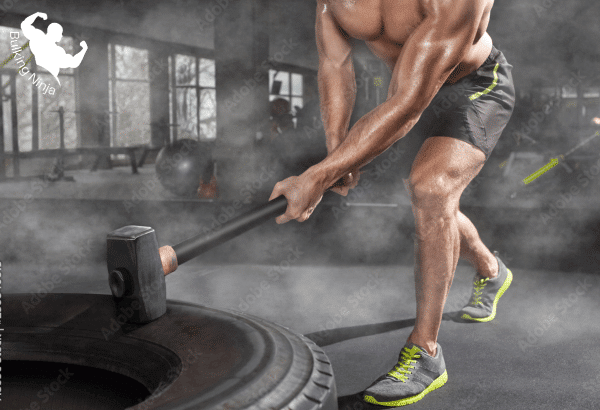
CrossFit is a highly dynamic and intensive fitness regimen that blends various exercise disciplines to provide a comprehensive workout. Here’s how it functions:
Diverse Disciplines: CrossFit includes elements from weightlifting, high-intensity interval training (HIIT), gymnastics, and more. This variety ensures a well-rounded approach to fitness, targeting multiple physical attributes.
Resistance Training: A significant component of CrossFit is resistance training, utilizing equipment like barbells, dumbbells, kettlebells, and more. These tools are used in exercises that build muscular strength and power.
Bodyweight Exercises: In addition to external weights, CrossFit frequently incorporates bodyweight movements such as push-ups, pull-ups, and squats. These exercises utilize the individual’s body weight as resistance and are key in improving overall body control and strength.
High-Intensity Routines CrossFit is known for its high-intensity workouts. These are often structured as circuits or sets of exercises performed with little rest in between, keeping the heart rate up and maximizing calorie burn and endurance.
Building Overall Strength and Endurance The varied, high-intensity nature of CrossFit workouts is excellent for building not just muscle strength but also cardiovascular and muscular endurance.
Agility and Flexibility Many CrossFit exercises require quick, agile movements and a good range of motion, contributing to improved agility and flexibility.
Community and Competition CrossFit is also known for its strong community aspect and the competitive spirit it fosters among participants, which can be a significant motivator.
In summary, CrossFit offers a diverse and intense workout regimen that combines elements from various disciplines, providing a unique blend of resistance training, cardiovascular endurance, agility, and flexibility. Its emphasis on high-intensity, varied routines makes it an effective choice for those looking to improve their overall fitness and strength.
Swimming

Swimming stands out as a unique form of exercise that offers a full-body workout, utilizing the natural resistance of water. Here’s an overview of its benefits:
Water Resistance: The resistance provided by water during swimming is both effective and gentle. Unlike traditional weight-based exercises, the resistance in swimming is evenly distributed and non-impact, making it easier on the joints.
Muscular Strength: Despite its gentleness, water resistance is quite effective for building muscle. Swimming engages various muscle groups, with particular emphasis on the upper body, core, and legs. The resistance increases with the speed and intensity of the swim, allowing for strength building without the need for weights.
Cardiovascular Fitness: As an aerobic exercise, swimming greatly enhances cardiovascular health. It increases heart rate and promotes better blood circulation, contributing to overall heart and lung health.
Muscular Endurance: Regular swimming sessions improve endurance. Continuous swimming with repetitive strokes enhances the stamina of the muscles involved.
Lung Capacity: Swimming is also beneficial for respiratory health. It requires controlled breathing in an environment where air is not readily accessible (underwater), thereby improving lung capacity and efficiency.
Holistic Approach to Fitness: Each sport, like swimming, rowing, rock climbing, or combat sports, offers a unique way to engage in resistance training. These activities cater to various preferences and goals, providing dynamic and diverse methods to enhance strength, endurance, and overall physical fitness.
In summary, swimming is an excellent low-impact, full-body workout that leverages the natural resistance of water. It effectively builds muscular strength, enhances cardiovascular fitness, and improves lung capacity, making it a well-rounded exercise choice for people of all fitness levels.
Frequently Asked Questions
What are the 5 sports of muscular strength?
Effective sports for building muscular strength include powerlifting (maximal strength), weightlifting (dynamic movements), bodybuilding (muscle hypertrophy), strongman competitions (variety of strength-based events), and gymnastics (bodyweight exercises for upper body and core).
What sports use resistance training?
Sports that use resistance training include weightlifting, bodybuilding, gymnastics, rowing, swimming, rock climbing, and CrossFit.
What sports help in strength training?
Sports great for strength training include weightlifting for heavy lifting, powerlifting focusing on squats, bench presses, and deadlifts, bodybuilding for muscle growth, gymnastics using bodyweight, CrossFit mixing various disciplines, combat sports like wrestling and judo for grappling strength, rock climbing for upper body and grip, team sports like football and rugby for power, rowing and swimming for endurance and strength, and track and field events like shot put for explosive power.
Which sport is best for muscle?
The best sport for building muscle largely depends on your specific fitness goals and preferences. However, bodybuilding stands out as the most focused sport for muscle development. It specifically targets muscle growth (hypertrophy) through intensive resistance training and a dedicated nutrition plan. Other effective sports for muscle development include weightlifting, powerlifting, and CrossFit, as they all incorporate significant strength training elements that stimulate muscle growth.
What sport is best for building strength?
Powerlifting is widely considered the best sport for building strength. It focuses on lifting maximal weights in the squat, bench press, and deadlift, which are key exercises for developing overall muscular strength. Other sports like weightlifting, which involves lifting heavy weights in the snatch and clean and jerk, and strongman competitions, known for varied strength challenges, are also highly effective for building strength.
What sport is best for building strength?
Powerlifting is widely considered the best sport for building strength. It focuses on lifting maximal weights in the squat, bench press, and deadlift, which are key exercises for developing overall muscular strength. Other sports like weightlifting, which involves lifting heavy weights in the snatch and clean and jerk, and strongman competitions, known for varied strength challenges, are also highly effective for building strength.
Top of Form
Which sport requires the most stamina?
Endurance sports typically require the most stamina. These sports involve prolonged physical exertion and often include activities like long-distance running, cycling, triathlons, and marathon swimming. Athletes in endurance sports need exceptional cardiovascular fitness and the ability to sustain high levels of energy output over extended periods.
Conclusion
In conclusion, the world of sports offers a rich diversity of opportunities for resistance training, catering to various goals and preferences. Whether you’re focused on building strength, sculpting muscles, enhancing endurance, or improving overall fitness, there’s a sport that can align with your objectives.
From the structured routines of powerlifting and bodybuilding to the dynamic challenges of rock climbing and CrossFit, each sport provides a unique path to achieving your fitness aspirations. The key is to find the one that resonates with you, keeps you motivated, and helps you enjoy the journey towards a stronger, healthier, and more resilient you. So, pick your passion, embrace the resistance, and let your chosen sport propel you toward your fitness goals.

